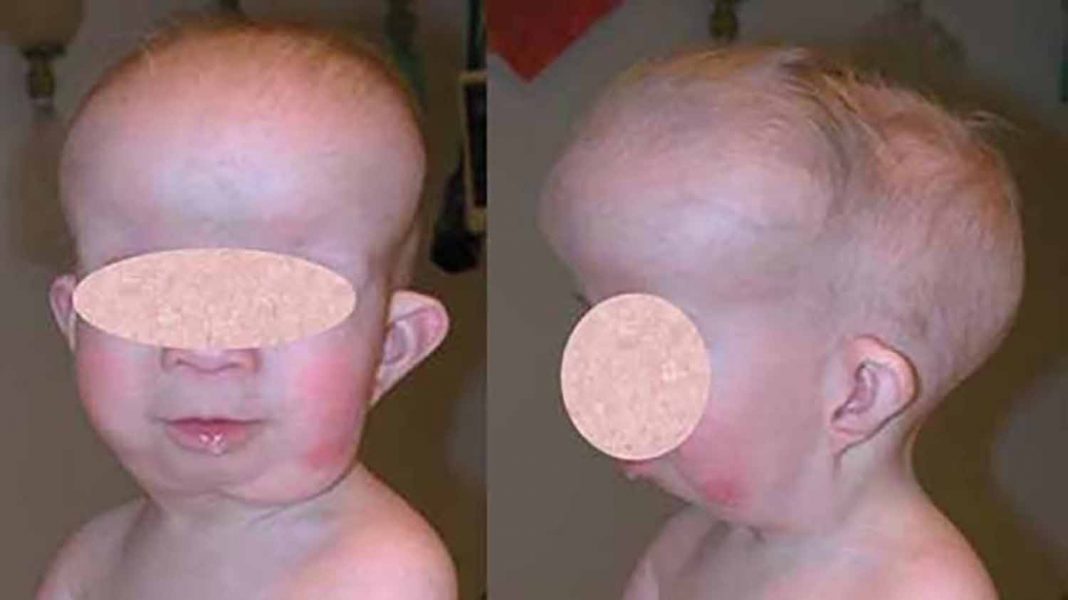Leo Pharma will partner to develop and commercialize PellePharm’s Phase III-bound patidegib topical gel 2% for Gorlin syndrome, the companies said today, in a potentially $760 million-plus collaboration that expands Leo into rare skin diseases, and gives it an option to buy PellePharm.
The collaboration will allow Leo to fund PellePharm development programs—starting with an initial commitment of $70 million comprised of equity financing and financial R&D support to fund a planned global Phase III trial (NCT03703310) of patidegib in Gorlin syndrome, set to start in the first quarter of 2019. The trial was “not yet recruiting” patients as of yesterday, according to ClinicalTrials.gov.
PellePharm is developing its 2% topical formulation of patidegib, with the goal of offering the first approved therapy for the prevention of Gorlin syndrome, also called basal cell carcinoma nevus syndrome (BCCNS). According to the NIH, approximately 1 in 31,000 Americans—about 10,000 people—are believed to be affected by Gorlin syndrome, characterized by constitutional, heritable mutations in one allele of the tumor suppressor gene encoding PATCHED1 (PTCH1), which acts as the primary inhibitor of the hedgehog signaling pathway.
The standard of care for Gorlin syndrome is surgery. According to PellePharm, patients face as many as 30 surgeries per year beginning in their mid-teens.
“Supporting our ambitious 2025 strategy, it marks Leo Pharma’s entrance in rare skin diseases and it offers a unique opportunity to bring the first treatment forward to people suffering from a very severe skin disease for which there currently are no approved therapies,” Thorsten Thormann, Leo’s VP of research, said in a statement, referring to the company’s public commitment to developing treatments that help 125 million patients by 2025.
Toward that goal, Leo earlier this year announced plans to acquire Bayer’s global prescription dermatology unit for an undisclosed price. U.S. closing conditions have been completed, Leo said on September 4.
Positive Phase II Data
On October 15, PellePharm trumpeted positive updated data from two Phase II studies of patidegib topical gel in a poster session at NORD’s Rare Diseases and Orphan Products Breakthrough Summit 2018 in Washington, D.C. The studies showed clinical clearance and prevention of basal cell carcinoma (BCC) tumors after six months of treatment with patidegib topical gel in patients with Gorlin syndrome, and both clinical and histologic clearance after three months of treatment in patients with sporadic, nodular BCCs.
Patidegib is designed to block BCC tumors by blocking the disease within the hedgehog signaling pathway. By offering a topical formulation, PellePharm has reasoned, it can provide patients with the efficacy shown by oral patidegib in Phase I trials without the adverse side effects. The gel formulation is stable at room temperature for at least two years, making it a viable potential therapy for ongoing, at-home management of Gorlin syndrome and high frequency BCC, PellePharm says.
Patidegib topical gel in Gorlin syndrome has received the FDA’s Orphan Drug and Breakthrough Therapy designations.
Leo and PellePharm agreed to form a joint development committee, with PellePharm overseeing global development efforts with Leo offering advisory support. Both companies said they will jointly drive commercialization planning.
The collaboration also gives Leo an option to acquire all shares in PellePharm. Should Leo exercise that option, PellePharm and its stockholders could receive up to an additional $690 million including merger consideration, regulatory, and commercial milestone payments, the company said. The stockholders are also eligible to receive a double-digit royalty tied to achieving commercial milestones.
“This collaboration puts us on track to commence our pivotal Phase III Gorlin syndrome trial in early 2019. Then after the potential merger, we look forward to working with Leo Pharma to address other rare skin diseases with unmet needs,” added Sanuj Ravindran, PellePharm’s president and CEO.


